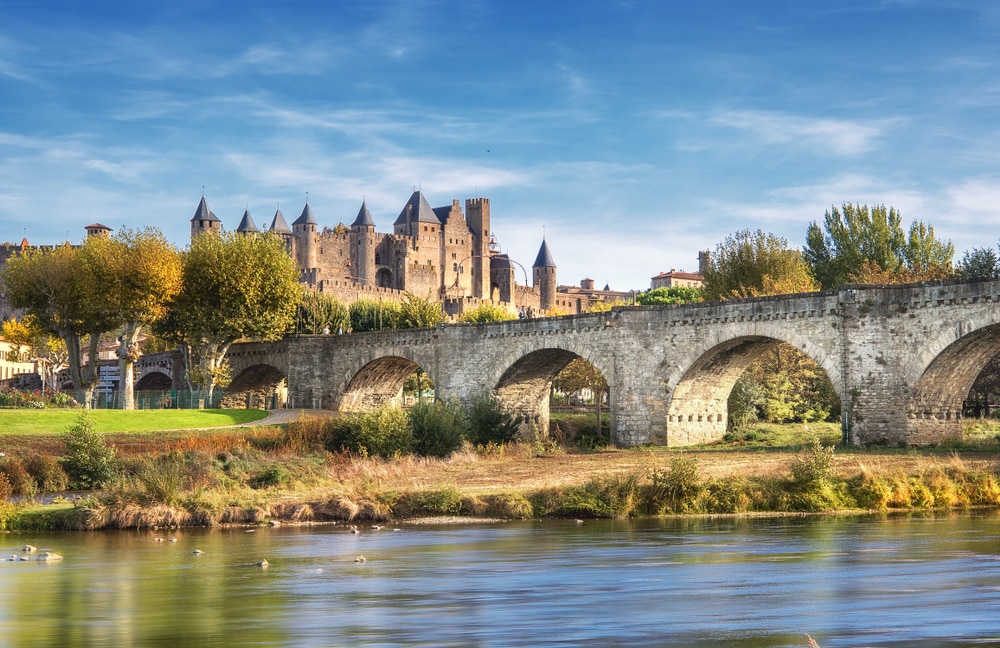New York, Paris, London and Sydney are just a few examples of travel destinations that are very popular among city vacationers. If you are looking for something special, you should look outside these metropolises and focus on cities with their very own charm. We have looked around the world and made a list of the most impressive city trips that are just right for holidaymakers interested in history and culture.
Bruges

The capital of West Flanders in Belgium bears the UNESCO label “World Heritage City” because it is characterized by a well-preserved brick Gothic style and the buildings form an architectural unit. Characteristic of the city centre are the medieval buildings, which characterise the scenery as authentic witnesses of time. Bruges is considered the birthplace of a group of artists of Old Netherlandish painting. Works of art from the “Bruges” are now exhibited in the Groeninge Museum.
The landmark of the capital of West Flanders is the belfry on the market square. A staircase with 366 steps leads to the observation deck of the 83-meter-high tower, which is located in the 13. and 14th century. At the same time, the building was intended to symbolize the power and wealth of the bourgeoisie and could not be surpassed by any other building. The climb is worth it not only because of the breathtaking views. Hidden in the tower is an old treasure chamber and the clockwork with carillon.
For centuries, the Bruges canals, known in Flemish as Reien, have been important connecting routes. The canals are reminiscent of Venice’s city scenery. Boat trips allow visitors to travel along the waterways, passing under romantic arched bridges and past enchanted gardens. On the 30-minute trip, which starts from five piers, tourists learn the most important things about the well-known sights.
Tip: A visit to the chocolaterie “Chocolate Line” is worthwhile, because the owner Dominique Persoone inspires with unusual chocolate creations such as edible chocolate color, chocolate lipstick or chocolate shooter.
Sukhotai
Today’s Thai city is located about 13 kilometers from the original capital of the kingdom of the same name. This was in the 13. and 14th century one of the larger kingdoms of the Thai. Sukhotai, which translates as “dawn of happiness”, was characterized by numerous Buddhist temples and monasteries. They have been preserved as ruins to this day and have been declared a World Heritage Site. Of the almost 30 complexes, there are some particularly valuable remains that are worth a visit. Wat Chetuphon is a walled complex with a cube-shaped pavilion in the middle. Its side walls were decorated with stucco figures of Buddha in different postures.
Wat Mahathat was the “Temple of the Great Relic” and, as the most important temple, represented the central point. Even today, the ruinous buildings house original Buddha statues from the old days. When the kingdom was in full bloom, the central sanctuary covered an area of 40,000 square meters. In addition to smaller buildings, there are about 200 towers, the so-called chedi. Wat Ton Chan is the “Monastery on the Sandalwood Tree” and is characterized by partially collapsed chedi towers. This monastery complex became famous for the archaeologically valuable terracotta amulet finds.
When the traditional Loi Krathong festival of lights is celebrated in Thailand , a trip is particularly worthwhile. The full moon night of the twelfth month within the Thai calendar usually falls in November. On this night, Thais place floating flower boats with lights and candles on lakes and ponds, so that they turn into a sea of lights in the darkness. This ceremony takes place in honor of the water goddess Mae Kongha.
Carcassonne
Anyone who visits this southern French fortified city embarks on a journey into the medieval past. The Cité de Carcassonne is a fortress built in the Middle Ages, which today represents the old town. However, its origins lie in the Gallo-Roman period. A double wall with a length of three kilometres and 52 defensive towers encloses the complex and is completely accessible. This double ring of defensive walls was intended to make the settlement impregnable. Today, the interior of the Mauerring with its narrow alleys tempts you to relax and explore. Restaurants and cafés spoil guests with typical French delicacies and artisans present their skills in small studios.
On the left bank of the Aude, the bastide of Saint Loius was built in the 13th century during the reign of the king of the same name. The streets were laid out in a checkerboard pattern starting from today’s Place Carnot. To this day, more inhabitants live in this lower town than in the ancient upper town. It is characterized by its architectural diversity and exudes a sumptuous charm with religious buildings and the Hôtels Particuliers. The hotel complexes impress with their elaborately designed facades, impressive gates and luxurious courtyards. These structures bear witness to the heyday of the textile industry in the 18th century.
Las Vegas

Numerous myths surround the metropolis of gambling. It is known for its colorful advertisements, the shrill nightlife and the approximately 70 casinos where masses of visitors challenge their luck. About four kilometers west of the city center is a nature reserve, which was built around the city’s original most important water source: the Las Vegas Springs. Four themed trails run through the Spring Preserve and end at an oasis called “cienega.” Here, visitors explore the history of desert life, gain insights into geology and immerse themselves in the floristic and faunistic biodiversity of the region.
Few visitors know that the city is the perfect starting point to marvel at some of the most exciting natural wonders of the USA . One of them is the Valley of Fire, 80 kilometers away, where temperatures rise to over 40 degrees Celsius in April. Red sandstone formations characterize the landscape. At Atlatl Rock, petroglyphs bear witness to a past when Anasazi Indians settled the land. The forces of nature have created interesting formations in the state park: the beehives are located directly on the thoroughfare and are reminiscent of oversized beehives, while the Elephant Rock near the east entrance resembles an elephant.
Edinburgh

It is not without reason that the Scottish city is called the “Athens of the North“. The flagship of the historic capital is the castle, which was built on a former volcanic cone. Archaeological finds indicate a settlement of the rock formation, which is dated to the Middle Ages. When exactly the castle was built is not known beyond doubt. Today’s castle is home to the legendary “Stone of Scone”. Since the medieval era, this has been used to crown Scottish and English kings.
Equally steeped in history is the “One O’Clock Gun” (German: 1 p.m. cannon). In times of flourishing seafaring, the cannon was fired daily at 1 p.m. sharp to give the sailors in the Firth of Forth an exact time. Even today, the cannon shot can be heard every day except Sundays at the same time. In August, the forecourt is transformed into the stage for the Military Tattoo, a parade of military bands and dancers.
The classicist Neustadt with its magnificent boulevards of the 18th century contrasts with the old town and the castle. In the New Town, the streets are arranged at right angles. Under the suburb of Gilmerton, the visitor gets an insight into the history of the settlement. An inconspicuous hut marks the entrance to a mystical complex of seven underground chambers connected by corridors and stairs. It is not clear what Gilmerton Cove was used for. The settlement itself was inhabited by miners and quarrymen.
Ystad
The southern Swedish city is considered the setting of Inspector Kurt Wallander. The author Henning Mankell has chosen his birthplace as the setting for his crime novels. Wallander’s house is located in Mariagatan. Visitors can explore other locations such as Fridolf’s pastry shop, the Hotel Continental or the police station with the Wallander app. It is not known why the writer chose the tranquil place as the backdrop for his brutal murders.
With its half-timbered houses and cobblestones, Ystad exudes a romantic flair reminiscent of Astrid Lindgren’s Bullerbü. In the surrounding area, flat hills and a long sandy beach dominate the picture. The former fishing town houses a church dating back to 1200. St. Mary’s Church is the oldest building in the small town. A tower guard sounds a copper horn every quarter of an hour every evening. This traditional profession has been practiced since the 18th century and is considered unique throughout the country.


